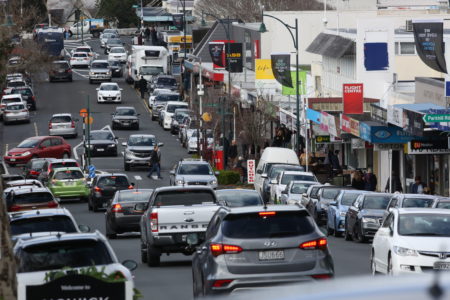
As Howick and districts count down to the 175th anniversary, the Times continues its series by Alan La Roche giving readers a glimpse of life as it used to be. The countdown began at the 170th in 2017
The Howick Town Board was Howick’s local body from 1921 to 1952 which included World War II. After the war, Howick attracted many immigrants from war-torn Britain and Europe. To live in their own home, near beaches and grow their own vegetables or fruit was attractive to immigrants.
After the concrete road to Auckland opened in 1931, with reticulated water from Pigeon Mountain, Howick evolved from a rural village to a dormitory suburb from Auckland with workers travelling to Penrose or Otahuhu factories or Auckland City. Howick had one policeman responsible for the area from the Tamaki River at Pakuranga, out to Maraetai with his office and jail in Picton Street, Howick. The policeman’s cottage was by today’s big oak tree in Uxbridge Road.
There were few inmates of the jail. Meals had to be nutritious and cooked by the policeman’s wife. The policeman rarely wore his uniform as most people knew him and he knew them. In 1956 the jail was sold and moved to Baird Street, converted to a private home after the shop keepers claimed it was a bad look for Howick having a jail in the main street.
The members of the Howick Town Board including the chairman were not paid for meetings or for transport costs. The chairman of the Howick Town Board always carried a shovel in his car to fix blocked drains. Bus shelters were often erected by volunteers who lived nearby with some materials from the bus company. Board meetings were fortnightly and members listed the worst road potholes to be repaired.
Roy Burton was the chemist in Howick as well as being Town Clerk, 1939 to 1944. His wife helped in the shop when he was along the road at the Town Hall Town Board offices. All bicycles had to have a bell and a light if it was used after sunset. A licence number had to be painted onto the mudguard.
No vehicles were to be parked on the roadside between 10pm and 6am as they were considered a traffic hazard. Today some streets have cars parked on both sides of the road all night. In 1947, the Howick Town Board took over the responsibility of the Howick Library which was in the old Howick Courthouse where all workers were unpaid volunteers.
Many roads were grass-covered and slowly they were converted to metal and much later tar sealed. Footpaths were all covered with shell from local beaches.
Rubbish collections used gullies such as the bottom of Uxbridge Road or Andrew-Botany road corner sections that later became reserves. Town Board rates were low, based on land value and the number of flush toilets even though everyone had septic tanks. Cows could graze on roadsides with a licence, saving the council cutting the grass. The noxious weeds inspector was busy controlling thistles, gorse and blackberries which were major pest plants.
The Howick Town Hall which was built in 1884, was demolished in 1969 and the Council Offices moved into George Windross’s home which was moved to Cockle Bay. Howick’s population grew from 500 in 1921 to 2000 in 1952. We have come a long way since those days.
- Alan La Roche MBE
Howick Historian
alanlaroche@xtra.co.nz






